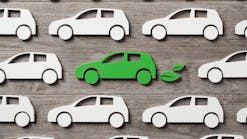The National Highway Traffic Safety Administration (NHTSA) is starting to look at potential changes to its New Car Assessment Program (NCAP), which ultimately will have an impact on aftermarket offerings.
NCAP issues "star ratings" to each model based on its performance in the categories of frontal and side impact, and rollover resistance. Auto manufacturers have introduced new safety features – air bags are a prime example – to earn as high a ranking as possible, with five stars being the highest.
Airbags are a prime example of how NCAP has stimulated availability of aftermarket product. Of course, there is a downside to that, in the case of airbags, given the NHTSA safety advisory last October about counterfeit airbags available in the aftermarket. But of course counterfeits plague distribution chains in many industries.
Automotive parts suppliers have been pushing NHTSA to expand the NCAP system for a while, and the agency made some changes around the edges of the program back in 2011. But companies such as Delphi, just to cite one example, are chomping on the bit hoping for a much more significant expansion of the program.
NHTSA already has a recent rulemaking docket looking at potential changes to brake testing protocols that would pave the way for Crash Imminent Braking (CIB) and Dynamic Brake Support (DBS) Systems.
"Delphi is a strong proponent of CIB technology and recommends that NHTSA initiate NCAP stars for these systems as soon as possible," says Ragiemra Amato, Director, Government/Technical Affairs, Innovation and Technology Office, Delphi Automotive.
The five-star rating system was developed and used for the first time to assess frontal impact safety for model year (MY) 1994 vehicles. The agency began testing and rating vehicles for side impact protection in the 1997 MY. Starting with the 2001 MY, the agency began using NCAP to rate vehicles for rollover resistance. The model year 2011 changes involved upgrading test dummies, establishing new injury criteria, adding a new side pole crash test, and creating a single overall vehicle score that reflects a vehicle's combined frontal crash, side crash and rollover ratings.
CIB and DBS systems are among the technologies NHTSA is closely examining for inclusion in the NCAP, according to the Federal Register notice. Also at the top of the list are blind spot warning, vehicle-to-vehicle communications (V2V) and advanced vehicle automation and advanced lighting.
William Shogren, Chief Engineer of Advanced Electronic Controls at Delphi, says, "It would be relatively straightforward to retrofit a warning system in the aftermarket by tapping in to the vehicle’s communication bus to extract needed information such as vehicle speed, etc. The real complexity comes in when trying to install aftermarket systems that control functions like the throttle, brakes and steering. Examples of warning systems that would be fairly straightforward in the aftermarket are lane departure warning, night vision with pedestrian detection, headway alert, automatic light control, blind spot monitor, rear view camera and traffic sign recognition. Systems that would be difficult in the aftermarket include adaptive cruise control, autonomous emergency braking, and lane change systems.”
Blind spot detection (BSD) systems, to take one example, are already being installed in some vehicle models as optional equipment. These systems are not regulated, nor are the warning systems standardized. The degree of sensitivity as to when to warn the driver is at the discretion of each vehicle manufacturer. NHTSA says it is not aware of any performance tests that exist for this technology. It is interested in comments regarding methods of comparatively evaluating BSD systems (e.g., the detection reliability, the driver interface, etc.) and estimation of safety benefits.
Subscribe to Aftermarket Business World and receive articles like this every month….absolutely free. Click here.


